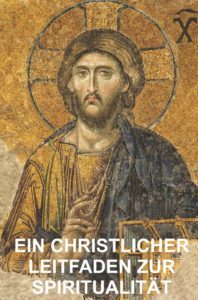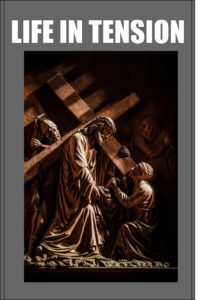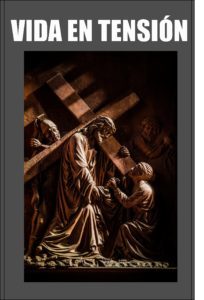Stephen W. Hiemstra's Blog, page 141
November 13, 2020
Einleitung auf Ein Christlicher Leitfaden zur Spiritualität

Von Stephen W. Hiemstra
Die Spiritualität ist gelebter Glaube. Wenn wir beten, anbeten oder unsere Nachbarn erreichen, leben wir unseren Glauben aus. Unseren Glauben strukturieren unsere Spiritualität wie Haut, die sich über die Knochen unseres Körpers erstreckt. Diesen Glauben anfangen mit dem Glauben an Gott den Vater durch Jesus Christus, wie er durch den Heiligen Geist in der Schrift, in der Kirche und im täglichen Leben offenbart wird. Unsere Theologie ordnet unseren Glauben. Ohne eine kohärente Theologie verlieren wir unsere Identität in Raum und Zeit, ohne Karte oder Kompass, der uns auf unserem Weg führt. Am Ende konzentrieren wir auf uns selbst, nicht auf Gott.
Die christliche Spiritualität dementsprechend anfange bei Gott, nicht bei uns. Wie die Frau, die Jesus von einer Wirbelsäule Entstellung geheilt hat, kann unsere einzige Antwort darin bestehen, Gott mit Lobliedern zu verherrlichen (Lukas 13:13). Deshalb wird dauerhafte christliche Freude erlebt, nicht indem man Christus als Retter erkennt, sondern indem man Christus als Herrn erkennt. Spirituelle Disziplinen und Erfahrungen sind Teil dieser Spiritualität, aber sie stehen nicht unbedingt im Mittelpunkt (1 Kor 13:8).
Diese Konzentrieren auf das, was Gott getan hat, beginnt in Vers eins der Genesis, in dem Gott die Himmel und die Erde erschafft. Was genau haben wir getan, daβ wir verdienen, geschaffen zu werden? Nichts. Tatsächlich unsere erste unabhängige Handlung war zu sunden. Was genau haben wir getan, um Vergebung zu rechtfertigen? Nichts. Christus ist gestorben für unsere Sünden. Die einzig sinnvolle Antwort auf diese Gaben der Schöpfung und des Heils ist Lob.
Die Urkirche interpretierte und fasste Gottes Offenbarungen im biblischen Text und in den frühen Glaubensbekenntnissen zusammen. Die Katechismen wurden später entwickelt, um wichtige kirchliche Doktrinen zusammenzufassen. Der Heidelberger Katechismus, Luthers Katechismus und der katholische Katechismus konzentrieren sich auf drei wichtige Glaubensaussagen: das Glaubensbekenntnis des Apostels, das Beten des Herren, und die Zehn Gebote (Chan 2006, 108). Es überrascht nicht, daβ sich der Gottesdiensten am Sonntagmorgen seit Jahrhunderten auf diese drei Glaubensaussagen konzentriert und oft auswendig gelernt und vertont wird. Der Heidelberger Katechismus zum Beispiel fördert den Fokus auf Anbetung und ist selbst in 52 Predigtthemen für den wöchentlichen Gebrauch unterteilt.
Die wichtigste spirituelle Disziplin im christlichen Glauben ist natürlich die Anbetung am Sonntagmorgen. Der Gottesdienst umfasst Gebet, Lesungen aus der Schrift, das gesprochene Wort, die Sakramente, Musik, Glaubensaussagen, und andere Ausdrucksformen der treuen Anbetung. In der Anbetung, verbindet Musik unser Herz und unseren Verstand.
Diese Anbetungserfahrung wird täglich durch persönliche Andachten sowie Andachten mit unseren Ehepartnern, Familien und anderen kleinen Gruppen gestärkt. Die Urkleinegruppe ist die Dreifaltigkeit—Vater, Sohn und Heiliger Geist—unsere Vorlage für eine gesunde Gemeinschaft. Und wenn wir unsere Spiritualität in die Arbeitswelt bringen, wird auch dies eine Gelegenheit zur Anbetung.
Die folgenden Seiten diskutieren die christliche Spiritualität im Kontext von täglichen Andachten. Jedes Thema wird mit einem biblischen Verweis, Reflexion, Gebet, und Diskussionsfragen behandelt. Falls zutreffend werden Referenzen für weitere Studien bereitgestellt. Die ersten vier Kapitalen (Einführung, das Glaubensbekenntnis des Apostels, das Beten des Herren, und die Zehn Gebote) umfassen vierzig Tagen und eignen sich daher als Fastenzeitstudium. Die gesamte Studie umfasst fünfzig Tage, die zu Ostern beginnen könnten und bis Pfingsten dauern.
Mein Gebet ist, daβ dieses Buch die Leser ermutigt, sowohl die christliche Spiritualität besser zu verstehen als auch ihren Weg mit dem Herrn zu pflegen. Es gibt keine solche Sache wie Qualitätszeit mit dem Herrn; es gibt nur Zeit. Der lebendige Gott spricht zu uns auf viele Arten, vor allem aber durch die Schrift, und erwartet, nachdem er einen Dialog initiiert hat, unsere Antwort (Thielicke 1962, 34).
Höre die Worte; Nehme die Schritte; Erlebe die Freude!
Einleitung auf Ein Christlicher Leitfaden zur Spiritualität
Verweise
Chan, Simon. 2006. Liturgical Theology: The Church as a Worshiping Community. Downers Grove, IL: IVP Academic.
Thielicke, Helmut. 1962. A Little Exercise for Young Theologians. Grand Rapids, MI: Eerdmans.
Siehe auch:
Preface to a Life in Tension
Andere Möglichkeiten, sich online zu engagieren:
Autoren Seite: http://www.StephenWHiemstra.net
Herausgeber Seite: http://www.T2Pneuma.com
Mitteilungsblatt: https://bit.ly/Plow_2020
The post Einleitung auf Ein Christlicher Leitfaden zur Spiritualität appeared first on T2Pneuma.net.
November 10, 2020
Benner Points to God

David G. Benner. 2003. Sacred Companions: The Gift of Spiritual Friendship & Direction. Downers Grove: IVP Books.
Review by Stephen W. Hiemstra
The term, soul mate, is often bantered about in the popular media without a clear definition. Usually, a soul mate is simply a photogenic member of the opposite sex who understands you. In seminary a friend spoke intriguingly about spiritual friends who: nurture the development of each other’s soul (16). This definition sounded remarkably like the relationship I shared with my best friend in high school who went on to become a pastor. When I learned that my friend took his comments from David Benner’s book,Sacred Companions: The Gift of Spiritual Friendship and Direction, I immediately ordered a copy.
Introduction
Some books are good for information; others offer solace in life’s journey. Benner’s work clearly falls in both camps. He writes: The essence of Christian spirituality is following Christ on a journey of personal transformation…Spiritual friends accompany each other on that journey (26). Reading along I discovered things about myself that had never previously been expressed in words.
Spiritual Direction
One such point was Benner’s comment about spiritual direction. The objective in offering direction is not to provide counsel or even react to things said, but rather to point friends to God’s work in their personal lives. Benner writes: spiritual direction is not primarily about theology. It is about personal, experiential encounter with God (155). Soul care consists, not of advice or disciplining, but of compass reading. Disciplining focuses on first steps while spiritual direction focuses on later stages in the journey (28).
Jesus modeled this focus saying: I tell you the truth, unless you change and become like little children, you will never enter the kingdom of heaven (Matthew 18:3 NIV). Only someone well along in the journey of life needs to reflect back on childhood experiences. Paul likewise appeared to position himself primarily as a spiritual traveler rather than teacher. For example, Paul writes: Indeed, I count everything as loss because of the surpassing worth of knowing Christ Jesus my Lord. For his sake I have suffered the loss of all things and count them as rubbish, in order that I may gain Christ (Philippians 3:8 ESV). As a fellow traveler, Paul’s work as an evangelist placed him in the position of a guide pointing the way to Christ. A guide travels; a teacher waits for students to appear.
This “compass reading” objective of spiritual direction and spiritual friendship is critical in offsetting the idolatry of individualism. Normally, a preoccupation with holiness is critiqued by our society as “navel gazing” or becoming all churchy. While is certainly possible to become obsessed with the programs and trappings of the church, becoming sensitive to God’s work in our lives normally has the opposite effect. God is unseen and speaks through people and things seen. When we become sensitive to God’s work, we become more fully aware of everyone and everything else in our lives. This sensitivity accordingly strips away the pretense of individualism. Compass reading has the effect of providing us a better set of priorities because God moves closer to the center of lives. Jesus focused on children, in part, because they are more sensitive, not less sensitive, to what is happening around them than most adults.
Background and Organization
At the time of this book’s publication, David Benner was a Distinguished Professor of Psychology and Spirituality at eh Psychological Studies institute in Atlanta, Georgia. His book is written in 9 chapters:
The Transformational Journey;
Hospitality, Presence, and Dialogue;
The Ideals of Spiritual Friendship;
Demystifying Spiritual Directions;
Soul Attunement;
A Portrait of the Process;
Becoming a Spiritual Director;
Spiritual Accompaniment in Small Groups; and
Spiritual Accompaniment in Marriage.
The first 3 chapters focus on spiritual friends; the next 4 focus on spiritual direction; and the last 2 focus on combining the two. These chapters are introduced with a lengthy preface and followed by an epilogue.
Assessment
If our faith in Jesus Christ is more caught than taught, spiritual friends play a critical role in our walk with the Lord. Reading Benner’s book was a key point in my journey.
Benner Points to God
Also see:
Books, Films, and Ministry
Other ways to engage online:
Author site: http://www.StephenWHiemstra.net
Publisher site: http://www.T2Pneuma.com
Newsletter: https://bit.ly/Plow_2020
The post Benner Points to God appeared first on T2Pneuma.net.
November 9, 2020
Ahead: Monday Monologues (podcast) November 9, 2020
 Stephen W. Hiemstra 2020 (Ken Burtram Photography)
Stephen W. Hiemstra 2020 (Ken Burtram Photography)By Stephen W. Hiemstra
This morning I will share a prayer and reflect on the Road Ahead. After listening, please click here to take a brief listener survey (10 questions).
To listen, click on this link.
Hear the words; Walk the steps; Experience the joy!
Ahead: Monday Monologues (podcast) November 9, 2020
Also see:
Monday Monologue On March 26, 2018
Other ways to engage online:
Author site: http://www.StephenWHiemstra.net,
Publisher site: http://www.T2Pneuma.com.
Newsletter: https://bit.ly/Plow_2020
The post Ahead: Monday Monologues (podcast) November 9, 2020 appeared first on T2Pneuma.net.
November 8, 2020
Prayer for Unhindered Faith

By Stephen W. Hiemstra
Holy and Eternal Father,
Draw me to yourself—open my heart, illumine my mind, and strengthen my hands in your service.
Let me follow the example of Jesus Christ, who lived as a role model for sinners, died on the cross to atone for our sins, and who rose from the dead to give us the hope of glory.
Through the power of the Holy Spirit, bridge any gap and resolve any tension that hinders my sanctification, blocks ministry to those around me, or blinds me to your call on my life.
Grant me a faith that transcends both lethargy and suffering that I might live and die as your witness through the power of your Holy Spirit and covered by the blood of the Lamb.
In Jesus’ precious name, Amen.
Prayer for Unhindered Faith
Also see:
Believer’s Prayer
Other ways to engage online:
Author site: http://www.StephenWHiemstra.net
Publisher site: http://www.T2Pneuma.com
Newsletter: https://bit.ly/Plow_2020
The post Prayer for Unhindered Faith appeared first on T2Pneuma.net.
Oración por una Fe sin Obstáculos

Por Stephen W. Hiemstra
Santo y Eterno Padre,
Llévame a ti mismo: abre mi corazón, ilumina mi mente y fortalece mis manos a tu servicio.
Permítame seguir el ejemplo de Jesucristo, que vivió como modelo a seguir para los pecadores, murió en la cruz para expiar nuestros pecados, y que resucitó de los muertos para darnos la esperanza de gloria.
A través del poder del Espíritu Santo, cierra cualquier brecha y resuelve cualquier tensión que dificulte mi santificación, bloquee el ministerio a quienes me rodean o me ciegue a tu llamado en mi vida.
Concédeme una fe que trascienda tanto el letargo como el sufrimiento para que pueda vivir y morir como tu testigo a través del poder de tu Espíritu Santo y cubierto por la sangre del Cordero.
En el nombre precioso de Jesús, Amén.
Oración por una Fe sin Obstáculos
Ver también:
Gospel as Divine Template
Otras formas de participar en línea:
Sitio del autor: http://www.StephenWHiemstra.net,
Sitio del editor: http://www.T2Pneuma.com.
Boletín informativo: https://bit.ly/Plow_2020
The post Oración por una Fe sin Obstáculos appeared first on T2Pneuma.net.
November 6, 2020
The Road Ahead

that I may know him and the power of his resurrection,
and may share his sufferings, becoming like him in his death,
that by any means possible I may attain the resurrection from the dead. (Phil 3:10-11)
By Stephen W. Hiemstra
In the Beatitudes Jesus teaches his disciples a simple lesson: how we live and how we die matters in the kingdom of God. This kingdom principle is borne out as we reduce tension with ourselves, with God, and with other people in each of the three movements of our spiritual lives. But our journey in life is not random, we know that in life, death, and resurrection the future is in Christ.
In Christ, we look beyond our natural selves to the person that God created us to be. In our natural selves, we scoff at the idea of living sacrificially without aspiring for personal gain or glory. In our natural selves, we think of holiness as being other worldly and mysterious. In our natural selves hope is futile and death has the final claim. But now we live, not in our natural selves, but in Christ.
In Christ, we live relieved of our obsession with past failures and present circumstances, chains that have been broken. Because our identity is in Christ and not in circumstances, our identity is secure in the immutable character of Christ, not evolving with changes in fashion, law, or science. Because our identity is in Christ and Christ sacrificed himself for us, we too can live sacrificially and be more fully present in our family life, church life, and work in the world, even loving our enemies. In Christ, we are truly a new creation.
In Christ even in death we can count the cost of discipleship knowing our future is secure (1 Pet 1:3) in spite of failing health, persecution, and rejection. Wherever life takes us we never leave the sovereign dominion of Christ and the shalom of God goes with us, as the Apostle Paul writes:
For I am sure that neither death nor life, nor angels nor rulers, nor things present nor things to come, nor powers, nor height nor depth, nor anything else in all creation, will be able to separate us from the love of God in Christ Jesus our Lord. (Rom 8:38–39)
Because Jesus rose from the dead, these words are trustworthy and give meaning to life allowing us to live fearlessly in joy, not being confined to our old nature.
In Christ, the hope of the resurrection means that our attitude in life and death is different, because living in the image of our creator and expecting both persecution and death, we await the glory of Christ in our resurrection (Phil 3:10–12). Anticipating these events, the hope of the resurrection serves both as a road-map and as a source of energy. In Christ, we are a new creation equipped with an objective, a map, and the strength to pursue our daily journey.
In this journey, humility nurtures our Christian authenticity, as we become God’s living artwork in creation (Dyrness 2001, 101), and marks us as Christians, from heart to mind—like an onion, which is consistent from core to skin and back again.
So our faith is in Christ and, like Paul, we emulate Christ’s life and death so that somehow we might attain the resurrection and eternal life (Phil 3:10–12).
References
Dyrness, William A. 2001. Visual Faith: Art, Theology, and Worship in Dialogue. Grand Rapids: Baker Academic.
The Road Ahead
Also see:
Preface to a Life in Tension
Other ways to engage online:
Author site: http://www.StephenWHiemstra.net
Publisher site: http://www.T2Pneuma.com
Newsletter: https://bit.ly/Plow_2020
The post The Road Ahead appeared first on T2Pneuma.net.
El Camino Adelante

y conocerlo a El, el poder de Su resurrección y la participación en Sus padecimientos,
llegando a ser como El en Su muerte, a fin de llegar a la resurrección de entre los muertos.
(Phil 3:10-11 NBH)
Por Stephen W. Hiemstra
En las Bienaventuranzas, Jesus enseña su discípulos una lección simple: cómo vivimos y cómo morimos importa en el reino de Dios. Este principio del reino se confirma al reducir la tensión con nosotros mismos, con Dios y con otras personas en cada uno de los tres movimientos de nuestras vidas espirituales. Pero nuestro viaje en la vida no es al azar, sabemos que en la vida, la muerte y la resurrección el futuro está en Cristo.
En Cristo, miramos más allá de nuestro ser natural a la persona que Dios nos creó para ser. En nuestro ser natural, nos burlamos de la idea de vivir sacrificialmente sin aspirar a la ganancia personal o la gloria. En nuestro ser natural, pensamos en la santidad como algo antinatural y misterioso. En nuestro ser natural, la esperanza es futil y la morte tiene la última palabra. Pero ahora vivimos, ni en nuestro ser natural, sino en Cristo.
En Cristo, vivimos aliviados de nuestra obsesión con los fracasos pasados y las circunstancias actuales, cadenas que se han roto. Debido a que nuestra identidad está en Cristo y no en circunstancias, nuestra identidad está segura en el carácter inmutable de Cristo, no evolucionando con cambios en la moda, la ley o la ciencia. Debido a que nuestra identidad está en Cristo y Cristo se sacrificó por nosotros, nosotros también podemos vivir con sacrificio y estar más presentes en nuestra vida familiar, en la vida de la iglesia y en el trabajo en el mundo, incluso amando a nuestros enemigos. En Cristo, verdaderamente somos una creación nueva.
En Cristo, incluso en la muerte, podemos contar el costo del discipulado sabiendo que nuestro futuro es seguro (1 Pet 1: 3) a pesar de la mala salud, la persecución y el rechazo. Dondequiera que nos lleve la vida, nunca dejamos el dominio soberano de Cristo y el shalom de Dios nos acompaña, como escribe el apóstol Pablo:
Porque estoy convencido de que ni la muerte, ni la vida, ni ángeles, ni principados, ni lo presente, ni lo por venir, ni los poderes, ni lo alto, ni lo profundo, ni ninguna otra cosa creada nos podrá separar del amor de Dios que es en Cristo Jesús Señor nuestro. (Rom 8:38-39)
Debido a que Jesús resucitó de entre los muertos, estas palabras son confiables y dan sentido a la vida, permitiéndonos vivir sin temor en la alegría, sin estar limitados a nuestra vieja naturaleza.
En Cristo, la esperanza de la resurrección significa que nuestra actitud en la vida y la muerte es diferente, porque viviendo a la imagen de nuestro creador y esperando tanto la persecución como la muerte, esperamos la gloria de Cristo en nuestra resurrección. (Phil 3:10–12). Anticipando estos eventos, la esperanza de la resurrección sirve tanto como una hoja de ruta y como una fuente de energía. En Cristo, somos una nueva creación equipado con un objetivo, un mapa, y la fuerza para seguir nuestro viaje cotidiana.
En este viaje, la humildad nutre nuestra autenticidad cristiana, a medida que nos convertimos en la obra de arte viviente de Dios en la creación (Dyrness 2001, 101), y nos marca como cristianos, de corazón a mente, como una cebolla, que es consistente desde el núcleo hasta la piel y viceversa.
Entonces nuestra fe está en Cristo y, como Pablo, emulamos la vida y muerte de Cristo para que de alguna manera podamos alcanzar la resurrección y la vida eterna (Phil 3:10–12).
References
Dyrness, William A. 2001. Visual Faith: Art, Theology, and Worship in Dialogue. Grand Rapids: Baker Academic.
El Camino Adelante
Ver también:
Gospel as Divine Template
Otras formas de participar en línea:
Sitio del autor: http://www.StephenWHiemstra.net,
Sitio del editor: http://www.T2Pneuma.com.
Boletín informativo: https://bit.ly/Plow_2020
The post El Camino Adelante appeared first on T2Pneuma.net.
November 3, 2020
Paul Writes with Pictures

Ann Whitford Paul. 2018. Writing Picture Books: A Hands-on Guide from Story Creation to Publication. Cincinnati: Writers Digest Books.
Review by Stephen W. Hiemstra
Our relationship with picture books runs deep, certainly deeper that can easily be expressed in words. Think about the foods that had special meaning to you when you were young, like watermelon, chicken noodle soup, and chocolate chip cookies. These foods remind me of my grandmother and life on the farm. Later events, places, and people never reached into my soul and touched me so elementally.
Introduction
Ann Whitford Paul writes, in Writing Picture Books, this statement of objectives:
“Picture books are usually read by an adult to a nonreader. To that end, picture books combine words with pictures that entice the nonreader to listen and help her construct meaning from the words. Picture books. Traditionally find an audience in young children. Today, some picture books and graphic novels are published for fluent readers, even adults, but this book will focus on those aimed at children ages two through eight.” (7-8)
The ideal manuscript has less than 500 words and fits in the typical 32-page format, focusing on action and dialogue. (8-9)
Paul offers twelve tips for writing for children and an additional three tips for the adults who will be reading:
Everything is new.
Children have had few experiences.
Children live in the present.
Children have strong emotions.
Sometimes childhood is not happy.
Children perceive more than we think they do.
Children have short attention spans.
Children are self-centered.
Children long to be independent.
Children are complicated.
Children have rich imaginations.
Almost any topics is okay for a picture book.
Language does not have to be babyish.
Make books easy to read aloud.
Adults are frequently asked to read and reread picture books (10-16).
While some of this advice may sound obvious, Paul returns to many of these themes over and over in her guidance.
Background and Organization
Ann Whitford Paul tells us little about her formal training and work experience. Her website reports:
“But I didn’t think about being a children’s book author in middle school or high school or when I studied sociology at Northwestern University and the University of Wisconsin, and earned a master’s degree in social work at Columbia university. I worked as a social worker until my children were born. I was still reading books, only now to my children.”
Paul’s website cites only one book for adults, this one, but lists twenty-one children’s books. Because about a third of children under the age of twenty have Hispanic heritage, I find it interesting that she writes a number of books with a bilingual theme or title, such as Mañana Iguana. Being from Los Angeles, I suspect that she is aware of the demographics of childhood today.
Paul writes in twenty-five chapters divided into six parts plus voluminous front and back matter:
Before You Write Your Story
Early Story Decisions
The Structure of Your Story
The Language of your Story
Tying together Loose Ends
After Your Story Is Done (v-vi)
Paul’s writing is surprisingly precise and covers a number of topics, like a primer on poetry and how to choose a title, that are not typically included in writers’ how-to books.
Memorable Moments
How do you create whimsy? Although Paul does not mention whimsy, one attribute of children’s literature is a distinctive whimsical tone. Where else do you run across dressed up animals that unremarkably talk? Paul does, however, give us some clues.
Paul describes the animals as kids with fur. Animals allow the author to talk about difficult topics, like race relations, without wandering into politically difficult territory or the raises issue, like death, that are scary enough for adults, let alone children.
One way that Paul delicately strikes a good tone is through experimenting with alternative voices, some that are not familiar to other genres.
Have you heard of apostrophe voice? Paul writes: ”In this voice, the writer speaks to something in the story that can’t speak back.” (40) She writes:
“Good morning, toes,
Good morning feet,
Tangled up between
My sheets.
Be the first to touch the floor,
Hop me to the closet door.” (41)
Or how about mask voice, where “the narrator becomes an inanimate object, like a tree, desk, or bed, and tells the story from that object’s point of view.” (42) Clearly, to write for children, you need to enter a child’s world.
Assessment
Ann Whitford Paul’s Writing Picture Books is an interesting book on the craft of writing children’s books. While I turned to this book as I approached my own children’s book writing project, this is a book worthy of being read by authors in other genres. Why? This is a book that will stretch you as a writer and you may be surprised to find that you enjoy it, just for the reading. I certainly did.
Footnotes
https://AnnWhitfordPaul.com/about-me.
If Animals Gave Thanks, If Animals Went to School, If Animals Celebrated Christmas, If Animals Said I Love You, Twas the Late Night of Christmas, Word Builder, Count on Culebra, If Animals Kissed Good Night, Snail’s Good Night, Fiesta Fiasco, Hop! Hop! Hop!, Mañana Iguana, Little Monkey says Good Night, Silly Sadie, Silly Samuel, All by Herself, Everything to Spend the Night, Hello Toes! Hello Feet!, The Seasons Sewn, Shadows Are About, Eight Hands Round, and Owl At Night.
Also see:
Bell, James Scott. 2004. Plot and Structure: Techniques and Exercises for Crafting a Plot that Grips Readers from Start to Finish. Cincinnati: Writer’s Digest Books. (review)
Bell, James Scott. 2008. Revision & Self-Editing: Techniques for Transforming Your First Draft into a Finished Novel. Cincinnati: Writer’s Digest Books. (review)
Bell, James Scott. 2009. The Art of War for Writers: Fiction Writing Strategies, Tactics, and Exercises. Cinninnati: Writers Digest Books. (review)
Bell, James Scott. 2014. How to Write Dazzling Dialogue: The Fastest Way to Improve Any Manuscript. Woodland Hills, CA: Compendium Press. (review)
Bell, James Scott. 2019. The Last Fifty Pages: The Art and Craft of Unforgettable Endings. Woodland Hills, CA: Compendium Press. (review).
Books, Films, and Ministry
Other ways to engage online:
Author site: http://www.StephenWHiemstra.net
Publisher site: http://www.T2Pneuma.com
Newsletter: https://bit.ly/Plow_2020
The post Paul Writes with Pictures appeared first on T2Pneuma.net.
November 2, 2020
Links and Tensions: Monday Monologues (podcast) November 2, 2020
 Stephen W. Hiemstra 2020 (Ken Burtram Photography)
Stephen W. Hiemstra 2020 (Ken Burtram Photography)By Stephen W. Hiemstra
This morning I will share a prayer and reflect on Spiritual Links and Tensions. After listening, please click here to take a brief listener survey (10 questions).
To listen, click on this link.
Hear the words; Walk the steps; Experience the joy!
Links and Tensions: Monday Monologues (podcast) November 2, 2020
Also see:
Monday Monologue On March 26, 2018
Other ways to engage online:
Author site: http://www.StephenWHiemstra.net,
Publisher site: http://www.T2Pneuma.com.
Newsletter: https://bit.ly/Plow_2020
The post Links and Tensions: Monday Monologues (podcast) November 2, 2020 appeared first on T2Pneuma.net.
November 1, 2020
Lamb’s Prayer

By Stephen W. Hiemstra
Heavenly Father,
We praise you for the gift of your Holy Spirit to guide our thoughts and protect our hearts that we might grow more humble in each passing day.
We praise you for the example of Jesus of Nazareth who extended us shalom in the midst of the chaos of our lives that we might extend shalom to those around us.
We praise you for your example of holiness that we might hunger and thirst for no one but you.
We confess that our hearts and minds are corrupted with the sin of this world; cleanse us through the blood of the Lamb.
In Jesus’ precious name, Amen.
Lamb’s Prayer
Also see:
Believer’s Prayer
Other ways to engage online:
Author site: http://www.StephenWHiemstra.net
Publisher site: http://www.T2Pneuma.com.
Newsletter: https://bit.ly/Plow_2020
The post Lamb’s Prayer appeared first on T2Pneuma.net.



